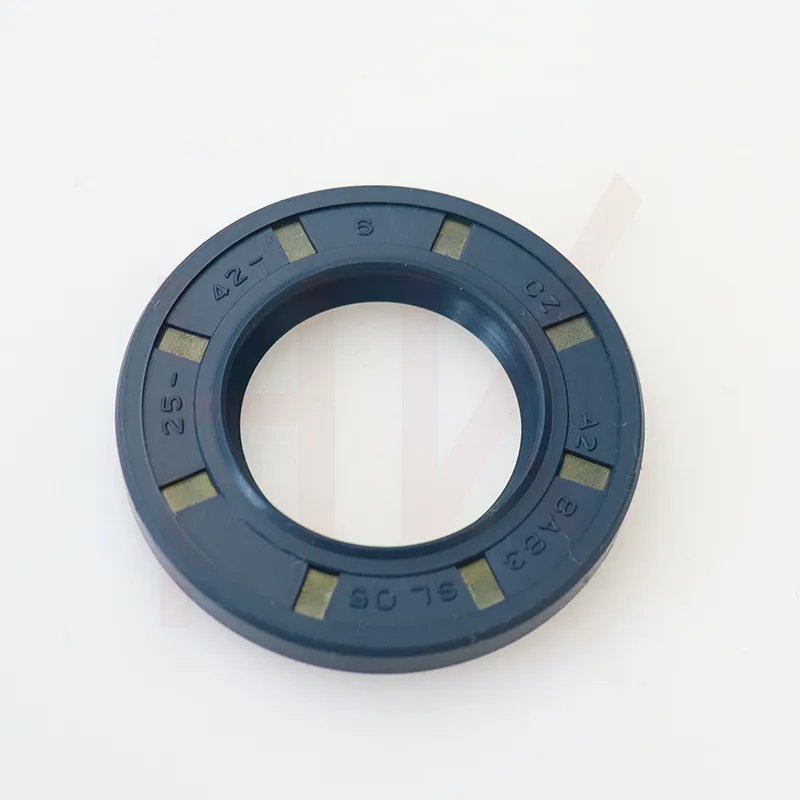12월 . 23, 2024 04:07 Back to list
gear box oil seal
Understanding Gearbox Oil Seals Importance, Types, and Maintenance
The gearbox is a critical component in the operation of various machinery, ranging from automobiles to industrial equipment. Its primary function is to transmit power from the engine to the wheels or other mechanical components, ensuring efficient movement and function. However, one of the key factors that contribute to the longevity and performance of a gearbox is the effectiveness of its oil seals. In this article, we will delve into the significance of gearbox oil seals, the different types available, and best practices for maintenance.
The Importance of Gearbox Oil Seals
Oil seals play a pivotal role in ensuring that the lubricant within the gearbox is maintained at optimal levels. They serve to prevent the oil from leaking out, which can lead to significant wear and tear on the internal components of the gearbox. The gearbox operates under various conditions, including high temperatures and pressures, making it essential for the oil seals to perform effectively.
Failure of the oil seal can result in oil leaks, which can have detrimental effects on the gearbox, including overheating, increased friction, and ultimately, gearbox failure. Regular monitoring and maintenance of oil seals are crucial to prevent these issues and ensure smooth operation.
Types of Gearbox Oil Seals
There are various types of oil seals used in gearboxes, each designed for specific applications and conditions
1. Rubber Seals These are the most common type of oil seals. Made from high-quality rubber compounds, they provide a tight seal and are resistant to wear, heat, and various chemicals. They are suitable for a wide range of applications, including automotive and industrial gearboxes.
2. Lip Seals Also known as shaft seals, they have a lip that presses against the rotating shaft to create a seal. Lip seals are highly effective at preventing leaks and can accommodate slight misalignments in the shaft.
3. Spring-loaded Seals These seals feature a metal spring that applies pressure to the sealing lip, ensuring a tighter fit. They are particularly useful in high-speed applications and can adapt to changes in temperature and pressure.
4. Metal Seals For extreme conditions, such as high temperatures or corrosive environments, metal seals are used. They offer superior durability and can withstand significant stress.
gear box oil seal

5. Composite Seals These seals utilize a combination of materials to maximize performance. They can provide benefits such as enhanced chemical resistance or better elasticity compared to traditional rubber seals.
Maintenance of Gearbox Oil Seals
To extend the life of gearbox oil seals and ensure optimal performance, regular maintenance is essential
1. Routine Inspections Regularly check the gearbox for signs of oil leakage. Look for oil stains or puddles, which may indicate a failing oil seal. Being proactive can save you from more significant repairs down the line.
2. Change Oil Regularly Maintaining clean and sufficient oil levels is crucial. Follow the manufacturer’s recommendations regarding oil change intervals and types of lubricants to use.
3. Inspect Seal Condition During routine maintenance, check the condition of the oil seals. Look for cracks, deformities, or any signs of wear. If any seals appear damaged, replace them immediately to prevent further issues.
4. Monitor Operating Conditions Excessive heat or pressure can lead to premature seal failure. Ensure that the gearbox operates within the specified temperature and pressure ranges.
5. Use Appropriate Seals When replacing seals, always use manufacturer-recommended or high-quality aftermarket seals to ensure compatibility and performance.
Conclusion
Gearbox oil seals are crucial components that ensure the effective operation of machinery. Understanding their importance, recognizing different types, and following best maintenance practices can prevent costly repairs and extend the life of the gearbox. By taking timely action and being diligent in maintenance, one can ensure that the gearbox remains in optimal working condition, thereby enhancing the overall efficiency and reliability of the machinery it drives.
-
The Trans-formative Journey of Wheel Hub Oil Seals
NewsJun.06,2025
-
Graphene-Enhanced Oil Seals: Revolutionizing High-Pressure Oil Sealing
NewsJun.06,2025
-
Future of Hydraulic Sealing: Advanced Intelligent TCN Oil Seals
NewsJun.06,2025
-
Don’t Let a Broken TCV Oil Seal Ruin Your Day
NewsJun.06,2025
-
Bio-Inspired Dust Seals for Better Sealing Performance
NewsJun.06,2025
-
Biodegradable and Sustainable Hydraulic Seal Materials
NewsJun.06,2025
-
Top Oil Seal Solutions for Your Industrial Needs
NewsMay.22,2025
Products categories
















